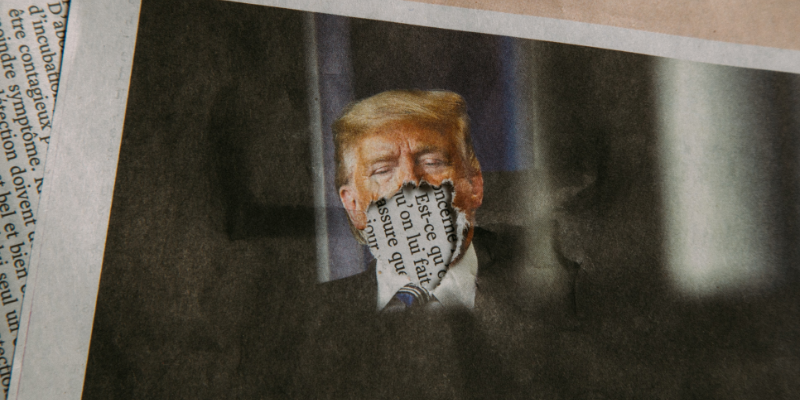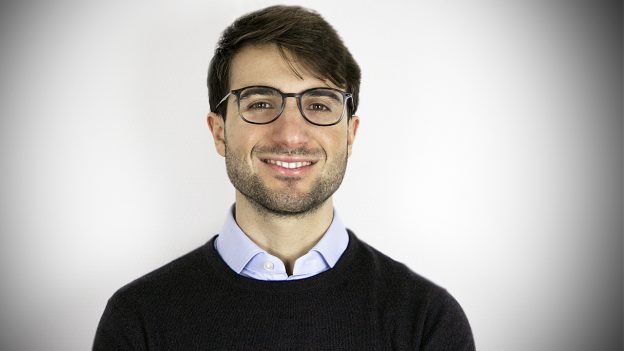Making sense of our connected world

Trump’s social media ban: Reviewing the constitutionality of permanent digital punishment
Trump’s ban from social media, while gaining significant media attention, does not represent an isolated case. Preventing individuals from accessing social media platforms or parts of them is a common phenomenon today that we can call ‘social media exclusion’. In a recent article, former HIIG Fellow Edoardo Celeste explains that without social media one cannot enjoy her fundamental rights to such an enhanced level as has become standard in recent years. For this reason, curtailing the possibility of accessing social media should be subject to minimal constitutional safeguards. A series of doubts must therefore be reserved in relation to the permanent nature of Donald Trump’s ban from Twitter and Facebook. Trump’s digital punishment is permanent* and potentially irreversible. Does banning Trump permanently represent a proportionate solution considering the other interests at stake?
Social media exclusion and Trump’s ban
Trump’s ban from social media, while gaining significant media attention, does not represent an isolated case. Preventing individuals from accessing social media platforms or parts of them is a common phenomenon today. I term it ‘social media exclusion’ and I argue that it is possible to distinguish three types of this phenomenon on the basis of the actors and specific underlying factors determining the users’ exclusion.
In the first case, social media users are excluded by other social media users. In US case law, this typology of social media exclusion has materialised in cases where citizens were prevented from directly interacting on social media with their elected representatives. The most notorious case involved the same former President of the United States, Donald Trump, who blocked a series of individuals on Twitter. US Courts eventually held that Mr Trump had elected to use his own social media space as a source of official news and public debate, and that, as a consequence, individuals could not be barred from accessing such a space of public interaction.
A second type of social media exclusion arises where social media users are prevented from accessing a social media website by the platform itself. In this second category, we can include Donald Trump’s recent ban from social media. So far, these cases have been common in German case law, where some users saw their accounts disabled by Facebook for having posted comments which allegedly infringed the terms of use of the platform, particularly the prohibition of hate speech. German courts upheld the importance of translating a series of basic constitutional principles and, in particular, various articulations of the rule of law and the principle of proportionality in the context of social media online content moderation. According to German judges, the decision of a platform to ban a user should be objectively justified and should not be arbitrary; platforms’ policies on banning users should be based on objective criteria; a user’s ban should not be automatic, and, platforms’ sanctions should be proportionate, taking into account the seriousness of the offence and the previous conduct of the user.
The third and final example of social media exclusion occurs where national law directly prevents specific individuals from accessing (some) social media platforms. This is common in the US, where national laws prevent former sex offenders from accessing social media. The US Supreme Court in Packingham affirmed that the law of North Carolina disproportionately restricted access for these individuals to what today are ‘the most important places for the exchange of views’.
Constitutional relevance of social media and the role of courts
Indeed, today social media represents an essential instrument for exercising a broad range of fundamental rights rotating around freedom of expression. Strictly speaking, preventing individuals from accessing social media does not nullify their constitutional rights. However, at the same time, without social media one cannot enjoy her fundamental rights to such an enhanced level as has become standard in recent years. For this reason, I argue that curtailing the possibility of accessing social media should be subject to minimal constitutional safeguards.
So far national courts have played an essential role in this regard. They serve as a catalyst of the process of constitutionalisation of the social media environment, acting as the joining ring between two constitutional dimensions: state constitutional law and the internal constitutions of online platforms. National courts are progressively recognising the constitutional relevance of social media in contemporary society and, as we have briefly seen in the previously mentioned examples, they are reinterpreting and translating traditional constitutional principles in light of the mutated context of online social platforms.
Courts do not act alone. Legislators, although slowly, are intervening in tackling issues such as disinformation and prohibited forms of speech. The platforms themselves are introducing constitutional principles and mechanisms, especially in the context of content moderation, as demonstrated by Facebook’s Oversight Board. Nevertheless, national courts play a ‘maieutic’ role in this context. They generate a virtuous circle by socratically stimulating and directing the process of constitutionalisation of the social media environment prompted by the other actors. Judges solve constitutional collisions between state constitutional law and the private constitutions of online platforms, in this way offering a path for constitutionalising social media.
Constitutionality of permanent digital punishment
From this perspective, Trump’s social media ban can be seen as another important step in the constitutional growth of the social media environment. Paradoxically, Donald Trump, the original excluder, has now been excluded from the social media realm. This decision has triggered significant public attention and offers an opportunity for social media companies to review their objectives and internal rules in light of the recent lessons received from national courts.
In this regard, it is possible to observe some positive developments. The decisional processes leading to the ban from the two social media platforms seem to be sufficiently proceduralised. In both cases, the ban itself was foreseen as a digital penalty of last resort in the rules of the platforms. The suspension of Trump’s account was not adopted automatically after one single violation, but reflected the recidivist attitude of the former US President. The adoption of the ban as a penalty was proportionate given the serious threats generated by the January 6th Capitol Hill events and the potential for undermining an orderly transition to a new President. The criteria adopted to sanction Trump were objective, although, of course, the analysis of the effects of his messages is open to different interpretations. However, it is important to remember that both Facebook and Twitter are private platforms, and are thus entities which are legally capable of setting rules which are stricter than public national or international standards.
A series of doubts must nevertheless be reserved in relation to the permanent nature of the sanction. Donald Trump’s ban from Twitter and Facebook is, respectively, permanent and indefinite. This type of social media exclusion is therefore peculiar because it is potentially irreversible. Trump’s digital punishment is permanent and definitive. However, banning Trump permanently does not seem to be a proportionate solution. If the suspension of his account is proportionate to the threats that could emerge, the permanent nature of the bans represents an ancillary penalty that does not ensure an appropriate balancing with the other interests at stake.
Why a permanent digital punishment is not proportionate
Firstly, the imposition of a permanent digital punishment curtails in a permanent way Mr Trump’s rights to freedom of expression and information. Social media have been recognized as the new public fora of the digital society. Rehabilitation and the possibility of having a second chance are cardinal principles of criminal policy in many states. Digital penalties too should be proportionate to their aims and allow for second chances. All users, including politicians, despite their political orientation and positions, should be given a second opportunity to regain access to social media, after a reasonable amount of time and in so far as their conduct does not violate the platform’s internal rules again. Secondly, one must consider the interests of other individuals in accessing Mr Trump’s past and future ideas. US courts held that Trump’s twitter account represented a public forum, a space of social relevance where the former President shared his policy actions. Trump’s Facebook and Twitter accounts are currently inaccessible, meaning that what Trump posted until January 2021 on his personal social media account is not available to the general public. In light of the importance of accessing this information, both platforms could have frozen Trump’s social media profiles instead of preventing individuals from accessing the content published thus far. Given the existence of this intermediary solution, the total obscuration of Mr Trump’s accounts seems to be disproportionate. Moreover, Mr Trump could also use these channels in the future to continue his political activity. Suspending Mr Trump’s account for a reasonable amount of time is certainly legitimate in light of the serious threats that his posts risked generating. However, a permanent suspension would definitively prevent millions of Trump’s followers, and other interested parties, from reading the ideas of a former US President.Finding the right balance between these different interests will contribute to enhancing the level of constitutionalisation of online platforms. In this way, foundational constitutional principles will be adapted and translated to reflect the needs of a digital constitutionalism. Only through this gradual process will the social media environment become less lawless and more in line with the shared values that underpin our constitutions.
*In the first version of the blog post, the term ‘capital digital punishment’ was used here. However, the blogpost did not aim to evoke the trauma and pain of people affected by death penalties. Therefore, this expression was replaced with ‘permanent digital punishment’.
This article was posted first on the HBI Media Research Blog (10 March 2021)
This post represents the view of the author and does not necessarily represent the view of the institute itself. For more information about the topics of these articles and associated research projects, please contact info@hiig.de.

You will receive our latest blog articles once a month in a newsletter.
Platform governance
Escaping the digitalisation backlog: data governance puts cities and municipalities in the digital fast lane
The Data Governance Guide empowers cities to develop data-driven services that serve citizens effectively.
Online echoes: the Tagesschau in Einfacher Sprache
How is the Tagesschau in Einfacher Sprache perceived? This analysis of Reddit comments reveals how the new simplified format news is discussed online.
Opportunities to combat loneliness: How care facilities are connecting neighborhoods
Can digital tools help combat loneliness in old age? Care facilities are rethinking their role as inclusive, connected places in the community.




